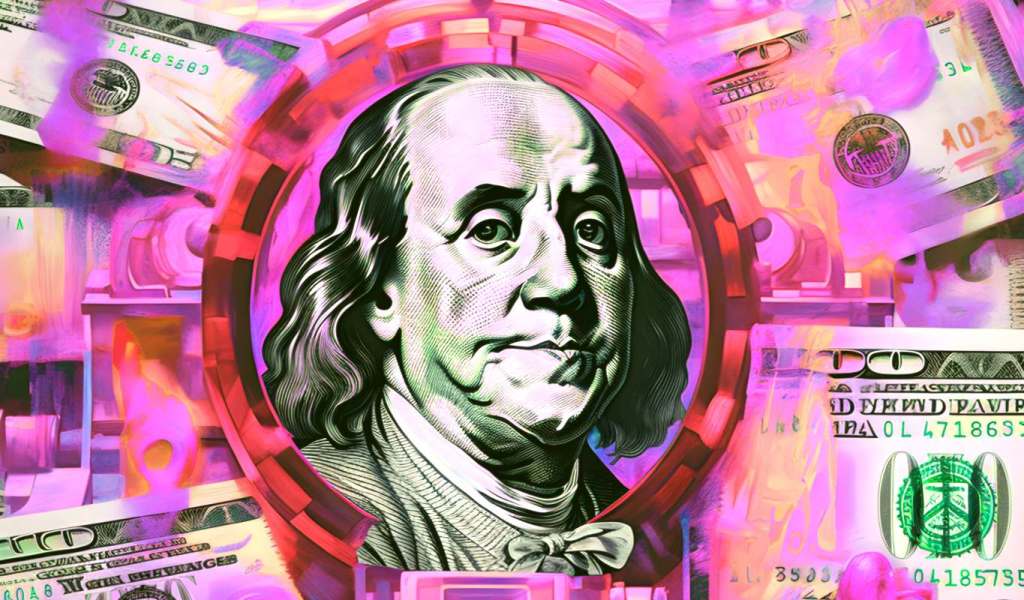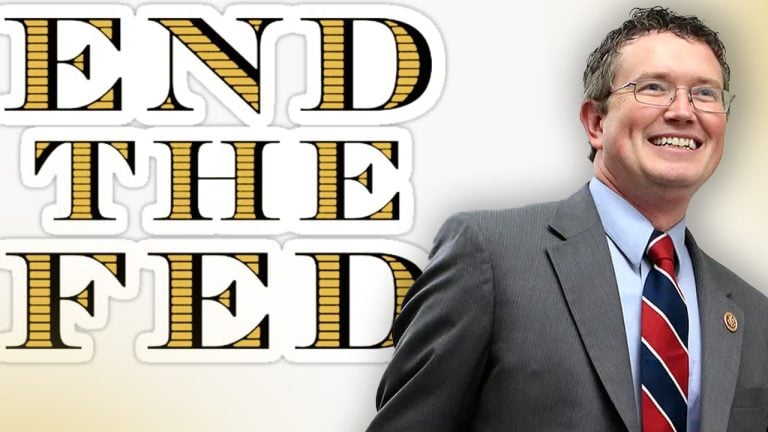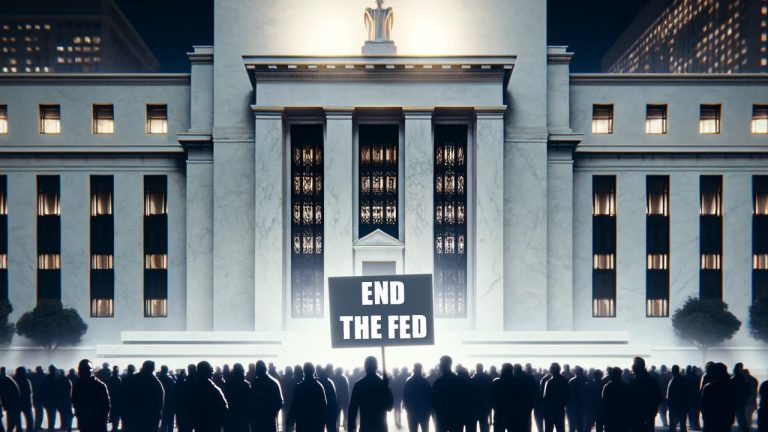 The International Monetary Fund (IMF) has advised the U.S. to improve its fiscal position by reducing spending and increasing revenues. The IMF emphasizes addressing rising debt through policy adjustments and recommends maintaining current interest rates until late 2024. “Given those risks, we agreed that the Fed should keep policy rates at the current level until […]
The International Monetary Fund (IMF) has advised the U.S. to improve its fiscal position by reducing spending and increasing revenues. The IMF emphasizes addressing rising debt through policy adjustments and recommends maintaining current interest rates until late 2024. “Given those risks, we agreed that the Fed should keep policy rates at the current level until […]
An infamous Russian hacker group claims it has successfully breached the U.S. Federal Reserve. Security researchers say the ransomware group LockBit claims it has accessed 33 terabytes of “juicy banking information containing Americans’ banking secrets.” The group says it’s holding the data hostage, demanding the Federal Reserve pay a bounty to keep the information under wraps. […]
The post Federal Reserve Breached, Claim Hackers, Allegedly Exposing 33 Terabytes of ‘Juicy Information Containing Americans’ Banking Secrets’ appeared first on The Daily Hodl.

Bitcoin whales and miners remain cautiously optimistic, strengthening the bullish case for $64,300 support.
On June 18, Bitcoin's (BTC) price tumbled 5.6% over the course of the day to $64,300, reaching its lowest level in over a month.
The six-day downtrend coincided with macroeconomic data pointing to a slowdown in the U.S. economy, particularly in retail sales and employment. Meanwhile, the U.S. Federal Reserve has kept interest rates at their highest level in two decades. However, the resilience in the derivatives markets points to a potential BTC price recovery ahead.
U.S. retail sales increased a modest 0.1% from the previous month, below the economists' consensus of 0.3%, according to Yahoo Finance.
 Minneapolis Federal Reserve President Neel Kashkari addressed Bank of America’s prediction for a potential Fed interest rate cut this year in an interview with CBS News on Sunday. Bank of America predicts that the Fed will cut rates once this year, likely in December. “I think that’s a reasonable prediction,” Kashkari said, noting that it […]
Minneapolis Federal Reserve President Neel Kashkari addressed Bank of America’s prediction for a potential Fed interest rate cut this year in an interview with CBS News on Sunday. Bank of America predicts that the Fed will cut rates once this year, likely in December. “I think that’s a reasonable prediction,” Kashkari said, noting that it […]
Billionaire venture capitalist Chamath Palihapitiya says economic conditions will force Fed Chair Jerome Powell to cut rates more than once. In a new episode of the All-In Podcast, Palihapitiya says he expects the economy to shrink based on data that Americans have spent all their savings. According to the Social Capital CEO, people relying on […]
The post Billionaire Chamath Palihapitiya Says Fed Under Pressure To Aggressively Cut Interest Rates – Here’s Why appeared first on The Daily Hodl.

Bitcoin's resilience amid price drops indicates strengthening support at the $65,000 level.
Despite testing the $65,000 support on June 14, Bitcoin (BTC) hasn't closed below $66,000 since May 17. While BTC was unable to break above the $72,000 resistance during this four-week period, some events have improved regulatory sentiment and highlighted how little room the U.S. central bank has left to maneuver without triggering inflation. Favorable market conditions and resilience in Bitcoin derivatives metrics indicate that the downside is extremely limited.
On May 16, U.S. lawmakers passed a Congressional Review Act to explore a Securities and Exchange Commission (SEC) rule that requires listed companies, including banks, to record crypto assets as both assets and liabilities on the balance sheet. According to Senator Cynthia Lummis, this vote was a milestone as it was the first “standalone crypto legislation” passed by Congress.
The resolution was eventually vetoed by President Joe Biden, but the defiance from Democrats demonstrates the “growing number” and “rising influence of crypto participants" in U.S. politics, according to Craig Warmke, a Bitcoin Policy Institute fellow. While Biden’s veto presents a challenge, both chambers of Congress would need a two-thirds majority to overrule it.

Two US senators are urging Federal Reserve Chair Jerome Powell to cut interest rates to avoid an economic recession. In a new letter penned directly to Powell, Democrats Elizabeth Warren (D-Massachusetts) and Jacky Rosen (D-Nevada) argue that persistent high rates are slowing down the economy and driving up the cost of housing and insurance, which […]
The post US Senators Pen Letter to Jerome Powell, Urging Fed Chair To Cut Interest Rates appeared first on The Daily Hodl.

Bitcoin price shows strength as investors expect the Fed to resume printing, but a handful of global macroeconomic headwinds are still in play.
Bitcoin (BTC) last closed above $68,000 on April 11, despite trading above $67,000 several times in the past five days. Even as Bitcoin gained 2% on May 20, another 7% move is needed to meet its all-time high. Meanwhile, gold reached a record high of $2,450 on May 20, and the S&P 500 index climbed to its all-time peak of 5,325 points. This backdrop has left BTC investors pondering the factors restraining its progress.
It can be argued that Bitcoin’s 51% gains year-to-date reflect investors’ anticipation of the monetary expansion that has recently benefited other assets. With the United States Federal Reserve needing to inject liquidity — either to support the troubled banking sector or to stimulate the economy — investors typically turn to scarce assets for protection. This inclination intensifies if there is an increasing likelihood of an economic recession.
According to UFed data, the broader U.S. monetary base (M2), which had stagnated at $20.8 trillion since May 2023, surpassed $21.0 trillion in April 2024. This shift marks the end of a contraction period that began in April 2022 when the M2 indicator reached $22 trillion. Regardless of interest rate trends, the increase in circulating money suggests rising inflationary pressures, even if companies and individuals are currently hesitant to spend.
 Following the policymaker’s survey, U.S. Representative Thomas Massie (R-Ky.) announced the introduction of H.R. 8421, known as the “Federal Reserve Board Abolition Act.” This legislation aims to dismantle the Board of Governors of the Federal Reserve and close its branches across the continental United States. Federal Reserve Board Abolition Act Resurfaces Two days ago, Massie, […]
Following the policymaker’s survey, U.S. Representative Thomas Massie (R-Ky.) announced the introduction of H.R. 8421, known as the “Federal Reserve Board Abolition Act.” This legislation aims to dismantle the Board of Governors of the Federal Reserve and close its branches across the continental United States. Federal Reserve Board Abolition Act Resurfaces Two days ago, Massie, […] On May 15, Thomas Massie, a Republican member of the United States House of Representatives, posted on X, inquiring whether he should introduce legislation to abolish the U.S. Federal Reserve. The poll garnered over 115,000 votes, with a significant 86% majority opting to “end the Fed.” Rep. Thomas Massie Questions Introducing Bill to Abolish U.S. […]
On May 15, Thomas Massie, a Republican member of the United States House of Representatives, posted on X, inquiring whether he should introduce legislation to abolish the U.S. Federal Reserve. The poll garnered over 115,000 votes, with a significant 86% majority opting to “end the Fed.” Rep. Thomas Massie Questions Introducing Bill to Abolish U.S. […]